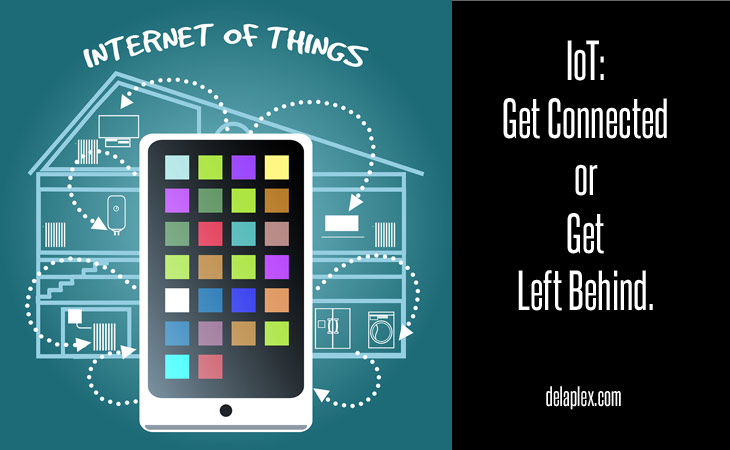
The Internet of Things (IoT) is a term used to describe a network of objects that have software, sensors or hardware to enable the object to connect to the Internet. "Things" began to be connected during the 1980s and 1990s, but these were primarily demonstrations or experiments. Although companies continued to develop and market "smart" devices, consumers were slow to accept them.
All that began to change around the turn of the 21st century. The first generation to "grow up" with computers and the Internet came of age, and people of all ages began to feel more comfortable with technology. As the demand for connected devices increased, companies found more and more ways to produce "things" that could connect to the Internet.
Many of the connected objects had been foreshadowed in the science fiction films produced during the 1960s and 1970s, while others had previously existed only in the minds of their inventors. Regardless, once the public became aware that virtually any object could be connected, the number of "things" grew rapidly. This growth is expected to continue for the foreseeable future; the latest estimates project that by 2020, there will be between 26 and 30 billion connected devices in use worldwide. A wide variety of IoT objects are currently available, with many more to come.
IoT in the Healthcare Industry
The IoT is already making extensive progress in the field of medical care. Pacemakers can now transmit information about the patient's condition to the physician, who in turn can adjust functionality from a remote location. Embedded insulin pumps can deliver a steady, consistent dosage without requiring the patient to be proactive about his or her medication. Wearable devices (such as heart monitors) can be used to record vital signs and transmit the data to the physician, reducing the need for in-office monitoring or laboratory visits.
IoT in the Home
Many connected devices for the home are currently on the market, ranging from the whimsical to the essential. For example, consumers can purchase a connected egg container and then use their smartphones while shopping to determine how many eggs they have. At the other end of the spectrum, they can use their cell phones to make sure that the deadbolt on the door is set, the alarm system is activated and the garage door is closed. Appliances can "self-diagnose" and alert homeowners to issues before a breakdown occurs or summon a service technician if necessary. "Smart" light bulbs can discourage burglars when no one is home by turning themselves on and off in patterns that mimic human activity. Residential and commercial buildings alike can be equipped with a variety of IoT devices to help control energy costs, such as intelligent thermostats that can monitor the normal usage patterns as well as occupancy levels to adjust temperatures accordingly.
IoT in Transportation
One of the first IoT applications for transportation was the OnStar system developed jointly by General Motors and Hughes Electronics. The system has been enhanced over the years to include features such as summoning help if the sensors detect that the vehicle has been in an accident, turn-by-turn directions and hands-free calling. If a vehicle is stolen, the system can locate it and track its movements, slow the vehicle to a stop or prevent it from being re-started once the ignition is turned off by the thief. Other IoT applications can allow a vehicle to run its own diagnostics and send notifications of services needed, provide tips on improving fuel efficiency by adjusting driving habits or start the engine from a remote location.
IoT in Retail
The retail industry has been increasingly embracing connected devices for a variety of functions. Sensors can detect a customer's cell phone and follow the path the customer takes while in the store to identify traffic patterns. Remote point-of-sale systems let associates "ring up" a customer's purchases from anywhere in the store, reducing the length of lines at the register. Self-service kiosks can allow customers to check inventory, register for a loyalty program or research a product; some kiosks can dispense products as well. Wearable tech allows associates to access information about a product without having to disengage from the customer.
Other Applications of IoT
Connected devices are currently being used for a variety of other purposes. Many "smart" cities are using IoT devices to monitor and control infrastructures, such as traffic lights or drawbridges. Electronic devices carried in a vehicle are used to pay tolls as the vehicle passes by the tollbooth, eliminating the need for the driver to stop at the booth and thus helping to keep traffic flowing smoothly. Wearable fitness monitors record activity levels and vital signs; data can be reviewed by the wearer or transmitted to another device for analysis. Power companies are connecting to the smart grid to help them collect data about usage and automatically respond to demands through load balancing. Manufacturers are increasingly automating processes and linking control systems to networks that can integrate predictive maintenance, their supply chain and energy optimization programs. Connected devices are being used to monitor water and air quality, wildlife movements, soil conditions and other environmental factors.
The Future of the IoT
The examples given are just a few of the many ways that the IoT is currently being used. As for the future, it is impossible to offer precise predictions as to what devices will be developed. However, it has been suggested that in the near future, every device that requires a power source will be connected to the IoT to allow providers to project usage accurately and adjust accordingly. It has also been suggested that the IoT could play an expanded role in the delivery of healthcare services, such as allowing "virtual visits" to the physician's office.
All the evidence indicates, however, that businesses will need to produce connected devices and/or apply IoT technology to be successful. The president and CEO of AT&T Mobility, Glenn Lurie, stated, "IoT has changed everything — every single aspect of every business … If you're not in the IoT eco-system … you're really going to be out. You're really going to get left behind."
How Can We Stay Current?
It can feel impossible and overwhelming to contemplate staying current with emerging IoT technologies. At delaPlex, our experience in integrating device APIs with cloud services and mobile applications allow you to stay on top of hardware and software IoT developments across industries. Contact us to find out how you can leverage our expertise by outsourcing development to stay on the cutting edge in your own industry.
6 IoT Startups That Make Connecting Things To The Cloud A Breeze

